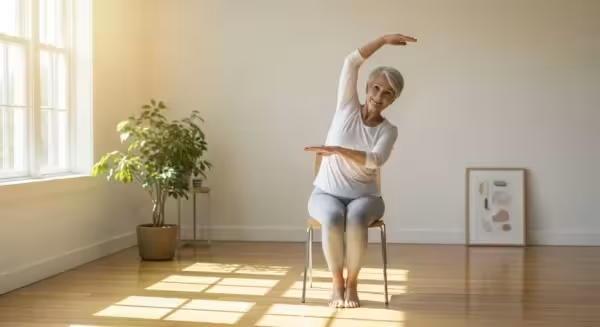
Understanding the Health Benefits (and Any Risks)
Focusing on your breath may seem like a small action, but it delivers powerful benefits that resonate throughout your entire body. The primary goal of these exercises is to improve the efficiency of your lungs, helping them to take in more oxygen and expel more carbon dioxide with each breath. This process is vital for every single cell in your body.
One of the main benefits of targeted breathing techniques is the strengthening of the diaphragm. The diaphragm is a large, dome-shaped muscle located at the base of your lungs that does most of the heavy lifting when you breathe. As we get older, we sometimes fall into a pattern of shallow “chest breathing,” which uses the smaller muscles in our neck and shoulders and doesn’t fully engage the diaphragm. This is less efficient and can lead to a feeling of breathlessness. Breathing exercises retrain your body to use the diaphragm properly, allowing for deeper, more complete breaths. This can lead to increased stamina and less fatigue during daily activities.
Improved lung health also has a wonderful ripple effect. When your body is well-oxygenated, your cardiovascular system doesn’t have to work as hard, which can be beneficial for heart health. Furthermore, deep, controlled breathing has a profound calming effect on the nervous system. It can help lower blood pressure, reduce feelings of anxiety or stress, and even promote better sleep. For individuals managing chronic conditions like Chronic Obstructive Pulmonary Disease (COPD) or asthma, specific breathing techniques can be an important part of a comprehensive management plan, helping to control shortness of breath and clear mucus from the lungs. Authoritative health information for seniors is provided by the National Institute on Aging (NIA) and the Centers for Disease Control and Prevention (CDC).
While these exercises are generally very safe, it is important to be aware of potential risks. The most important rule is to never push yourself to the point of discomfort. If you feel lightheaded, dizzy, or more short of breath while performing an exercise, you should stop immediately and rest. These feelings can be a sign of hyperventilation, which happens when you exhale too much carbon dioxide too quickly. The key is to be gentle and slow. Seniors with pre-existing conditions such as severe COPD, heart failure, or a history of a collapsed lung should be especially cautious. It is absolutely essential to speak with your doctor or a physical therapist before starting these or any new exercises to ensure they are safe and beneficial for your specific situation.















